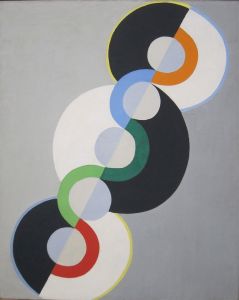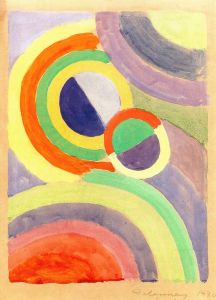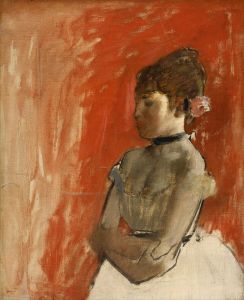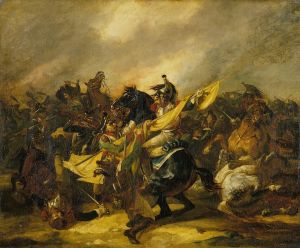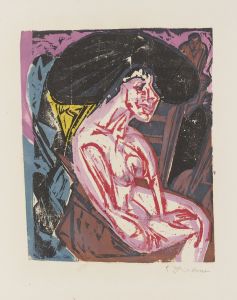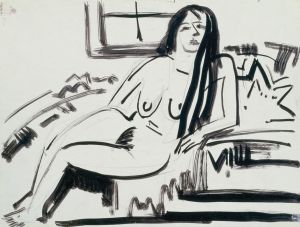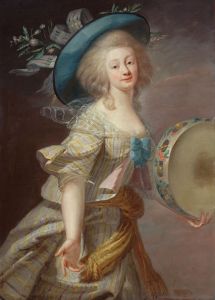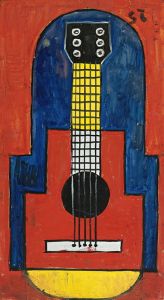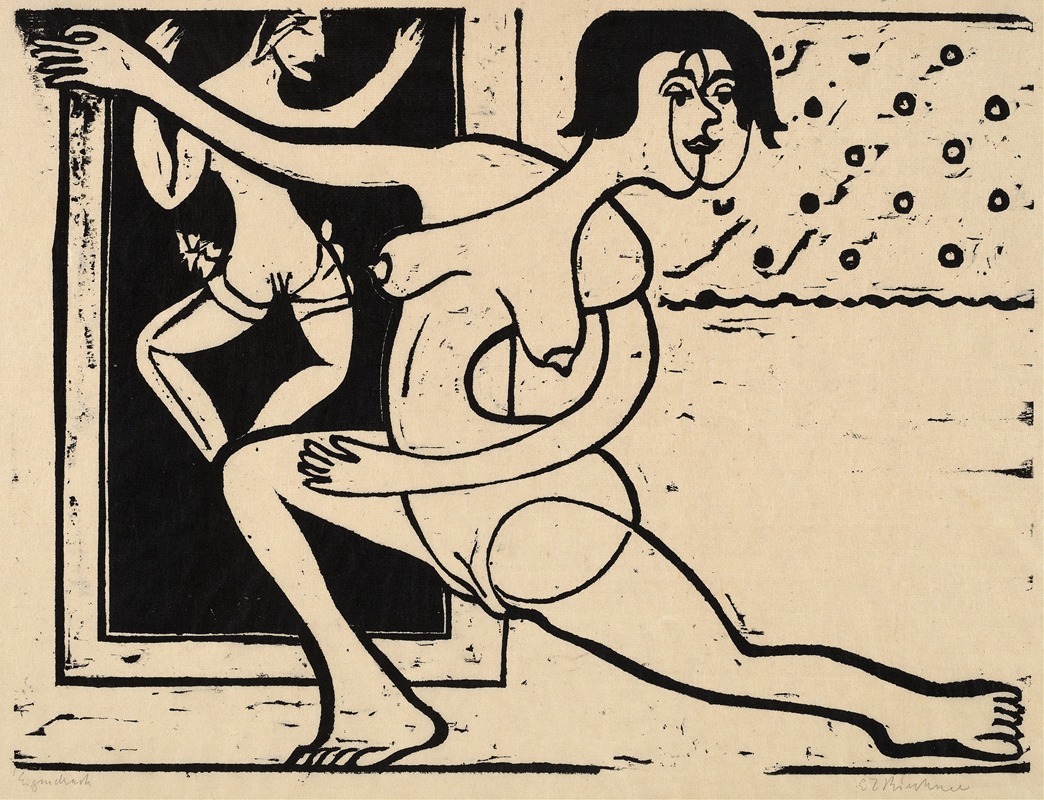
Dancer Practicing
A hand-painted replica of Ernst Ludwig Kirchner’s masterpiece Dancer Practicing, meticulously crafted by professional artists to capture the true essence of the original. Each piece is created with museum-quality canvas and rare mineral pigments, carefully painted by experienced artists with delicate brushstrokes and rich, layered colors to perfectly recreate the texture of the original artwork. Unlike machine-printed reproductions, this hand-painted version brings the painting to life, infused with the artist’s emotions and skill in every stroke. Whether for personal collection or home decoration, it instantly elevates the artistic atmosphere of any space.
"Dancer Practicing" is a painting created by the German expressionist artist Ernst Ludwig Kirchner. Kirchner, born on May 6, 1880, in Aschaffenburg, Germany, was a pivotal figure in the early 20th-century art movement known as Expressionism. He was a founding member of the artist group Die Brücke (The Bridge), which played a crucial role in the development of modern art by emphasizing bold colors, emotional intensity, and a departure from traditional artistic conventions.
"Dancer Practicing" exemplifies Kirchner's interest in capturing the dynamism and energy of modern life, a theme that recurs throughout his work. The painting depicts a dancer in the midst of practice, a subject that Kirchner frequently explored, reflecting his fascination with movement and the human form. The dancer is rendered with vigorous brushstrokes and vibrant colors, characteristic of Kirchner's style, which sought to convey the emotional and psychological states of his subjects rather than their physical likeness.
Kirchner's work often featured dancers, cabaret performers, and scenes from Berlin's nightlife, reflecting the cultural vibrancy of the city during the early 20th century. His portrayal of dancers was not merely about the physical act of dancing but also about the expressive potential of the human body. In "Dancer Practicing," the fluidity of the dancer's movements is captured through dynamic lines and a sense of immediacy, suggesting the artist's direct engagement with his subject.
The painting is also notable for its use of color. Kirchner employed a palette that includes bold, contrasting hues, which serve to heighten the emotional impact of the scene. The background is often simplified, focusing attention on the figure and her movements. This approach is consistent with the principles of Expressionism, which prioritized the artist's subjective experience and emotional response over realistic representation.
Kirchner's interest in dancers can be traced back to his early years with Die Brücke, where he and his fellow artists sought to break away from academic traditions and explore new forms of artistic expression. The group's manifesto emphasized the importance of direct observation and spontaneous creation, principles that are evident in Kirchner's depiction of the dancer. His work from this period is characterized by a sense of immediacy and raw energy, capturing the essence of the moment.
"Dancer Practicing" is part of Kirchner's broader body of work that includes paintings, prints, and sculptures. His contributions to the art world were significant, and his influence can be seen in the development of modern art throughout the 20th century. Despite facing personal and professional challenges, including the impact of World War I and the rise of the Nazi regime, which labeled his work as "degenerate art," Kirchner's legacy endures through his innovative and expressive approach to art.
Today, Kirchner's works are held in major museums and collections around the world, and "Dancer Practicing" continues to be celebrated for its dynamic portrayal of movement and its embodiment of the principles of Expressionism. The painting remains a testament to Kirchner's ability to capture the vitality and emotional depth of his subjects, making it a significant piece in the history of modern art.





